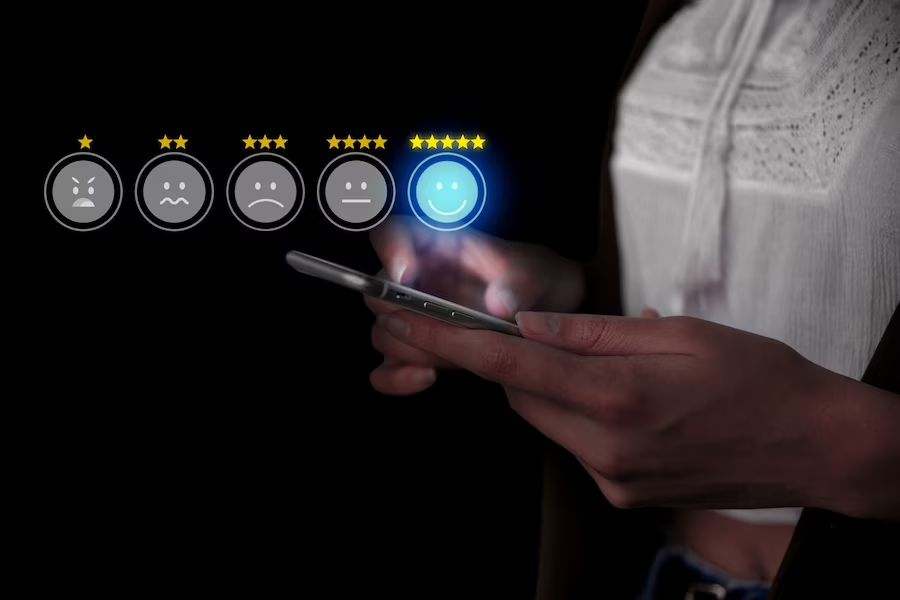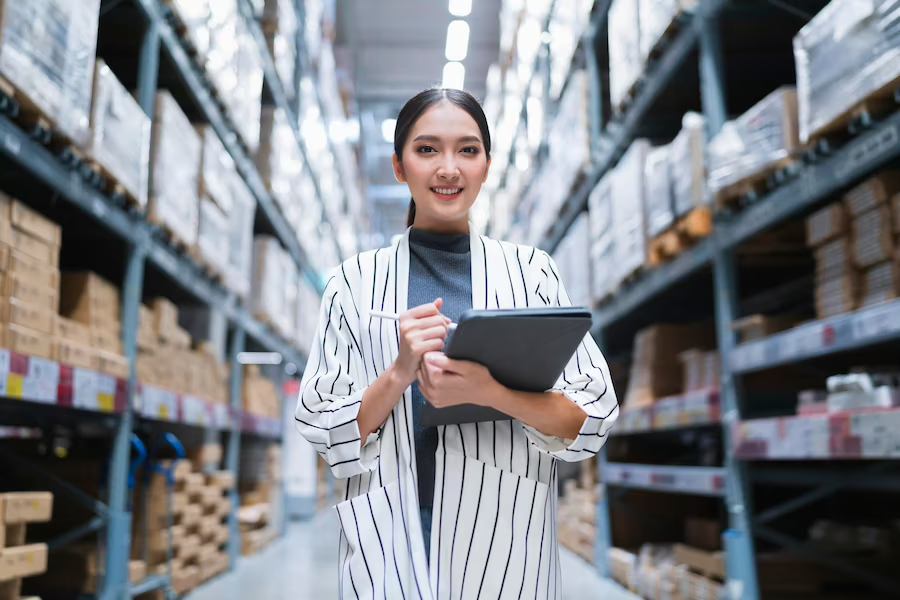As the retail industry evolves, adopting LTE and 5G technologies is becoming increasingly crucial for retail stores to stay competitive and meet ever-growing customer expectations.
Based on research conducted by a leading retail organization, it has been found that a significant majority of retailers have strategic plans to allocate resources toward the adoption and implementation of 5G and IoT technologies by the year 2023. This investment is not only aimed at enhancing in-store customer experiences but also at improving operational efficiencies for retail stores.
By leveraging the high speeds, low latency, and improved connectivity offered by these technologies, retailers can bridge the gap between online shopping and in-store experience, creating seamless, data-driven shopping experiences for consumers.
1. Enhanced Customer Experience

In today's competitive retail landscape, offering an exceptional customer experience is crucial for businesses to thrive. LTE and 5G technologies are pivotal in creating a more personalized, engaging, and efficient retail journey for customers.
So how can these technologies contribute to improving customer satisfaction?
Personalized Shopping Experience through Connected Devices and Mobile Devices
By utilizing connected and mobile devices in retail stores, retailers can provide personalized shopping interactions to their customers. By gathering data on customer preferences, browsing habits, and purchase history, retailers can tailor product recommendations, offers, and promotions specifically for each individual.
Based on a recent study conducted by a reputable consulting firm, it has been observed that an overwhelming majority of consumers, specifically 91%, exhibit a greater inclination to engage in shopping activities with brands that offer them personalized and pertinent offers and recommendations. By leveraging the speed and low latency of 5G networks, retailers can provide real-time, context-aware information, driving customer engagement and satisfaction.
Virtual and Augmented Reality to Enrich In-Store Experiences
Integrating virtual reality (VR) and augmented reality (AR) technologies in retail spaces can significantly enrich the retail journey for customers. For example, VR and AR allow shoppers to visualize products in different settings, try on clothing virtually, and even interact with digital signage for retail.
These immersive technologies can bridge the divide between online shopping and physical stores, offering a smooth, captivating, and interactive shopping journey.
Meeting Customer Expectations for Seamless and Efficient Shopping
The modern consumer desires a shopping process that is smooth, efficient, and hassle-free. By adopting LTE and 5G technologies, retailers can streamline their operations, such as inventory management, checkout processes, and customer support.
For example, smart shelves with IoT sensors can automatically track inventory levels and reorder products when needed, ensuring product availability and reducing out-of-stock scenarios.
In addition, mobile devices with high download speeds can offer customers access to self-checkout options and digital payment systems, reducing wait times and enhancing the overall customer satisfaction.
Furthermore, using digital signage in retail spaces can help make the retail journey more efficient. Signs can help promote new products, making it easy for customers to shop and find items that fit their needs.
2. Increased Sales and Customer Satisfaction

By integrating physical stores and e-commerce platforms, leveraging 5G networks for targeted promotions, and utilizing data insights for personalized marketing strategies, retailers can create a seamless retail journey for their customers.
Below are some reasons these cutting-edge technologies can help retailers achieve their goals:
Integration of Physical Stores and E-commerce for an Omnichannel Approach
Adopting LTE and 5G technologies enables retailers to create a seamless omnichannel retail journey by integrating their physical stores with e-commerce platforms. This allows customers to browse products, purchase, and access services across various channels, including in-store, online, and mobile devices.
Digital signage, which can display products and promotions, is essential for establishing a captivating omnichannel presence. According to a study, the global digital signage market is expected to reach $38.23 billion by 2028, highlighting the growing importance of this technology in the retail industry.
Utilization of 5G Networks for Targeted Promotions and Discounts
5G networks enable faster data transfer speeds and lower latency, which can help retailers deliver targeted promotions and discounts to their customers in real time. By analyzing data collected from connected devices and mobile phones, retailers can gain insights into customer preferences and behaviors, allowing them to offer personalized promotions and discounts that drive sales.
For example, T-Mobile and Verizon have launched 5G networks in major cities, providing retailers with the necessary infrastructure to implement these targeted marketing strategies.
With this advanced connectivity, retailers can leverage real-time data analysis to identify customer trends and preferences, ultimately offering tailored customer satisfaction that boosts customer loyalty.
Leveraging Data Insights for Personalized Marketing and Selling Strategies
LTE and 5G technologies allow retailers to collect and analyze vast amounts of data from various sources, such as in-store sensors, e-commerce platforms, and social media channels.
This data can be used to develop personalized marketing and selling strategies that cater to individual customer preferences. For instance, retailers can use data insights to create customized product recommendations, offer tailored discounts, and send targeted marketing communications to their customers.
By leveraging the high-speed connectivity and low latency of 5G networks, these personalized marketing strategies can be delivered in real-time, ensuring that customers receive relevant offers and promotions when they are most likely to purchase.
3. Optimized Retail Business Operations

Integrating LTE and 5G technologies in retail and department stores can significantly improve in-store operations.
Enhanced data collection and analysis, deployment of advanced technologies for cost and pricing optimization, and improved customer service aways how these cutting-edge technologies can benefit retailers.
Let's explore how LTE and 5G can optimize store operations and drive business success:
Enhanced Data Collection and Analysis for Better Decision-Making
LTE and 5G technologies enable faster and more reliable data collection from various devices, such as IoT sensors and mobile devices. This allows retailers to gather and analyze large volumes of data, resulting in better insights and more informed decision-making.
By leveraging the high-speed connectivity and low latency of 5G networks, retailers can process and analyze data in real time, enabling them to react quickly to changing market conditions and consumer demands.
Deployment of Advanced Technologies for Cost and Pricing Optimization
Adopting LTE and 5G technologies can also facilitate the deployment of advanced technologies for cost and pricing optimization in retail stores. For example, machine learning and AI-powered tools can analyze data collected through different devices and provide retailers with insights into consumer and account behavior, inventory levels, and market trends.
This can help retailers to determine optimal pricing strategies, promotional offers, and sales forecasts, ultimately driving revenue growth and enhancing profitability.
Organizations implementing AI-driven pricing strategies experienced a noticeable boost in their EBITDA (earnings before interest, taxes, depreciation, and amortization), as per a study conducted by Deloitte. By leveraging the capabilities of 5G networks, retailers can deploy these advanced technologies more effectively, maximizing their potential benefits.
Improved Inventory Management

Efficient inventory management is vital for the success of retailers. LTE and 5G technologies have the potential to revolutionize inventory management processes, resulting in real-time tracking, faster restocking, and seamless integration with e-commerce platforms.
Here's how these advancements can lead to significant improvements in inventory management for retailers.
Real-Time Inventory Levels and Tracking through Smart Shelves
Smart shelves with IoT sensors and connected devices can provide real-time inventory tracking and monitoring for retail stores. This gives retailers an accurate and up-to-date understanding of their inventory levels, minimizing the risk of stockouts and overstocking.
With the increased speed and lower latency provided by a 5G network, real-time inventory data can be accessed and analyzed more efficiently, enabling retailers to make better-informed decisions.
Faster and More Accurate Restocking Processes
LTE and 5G technologies can also contribute to faster and more accurate restocking processes. With real-time inventory data available through smart shelves, retailers can automate the restocking cycle, reducing human error and ensuring that popular items are always available for customers.
Furthermore, the high-speed connectivity offered by 5G networks can facilitate quicker communication between suppliers and retailers, streamlining the ordering and delivery process.
This can result in reduced lead times, lower costs, and improved customer satisfaction due to the consistent availability of products.
5. Future-Proofing Retail Stores

The rapid advancements in technology and changes in consumer behavior have made it crucial for retailers to future-proof their retail spaces.
By expanding 5G coverage, adopting 5G technology ahead of competitors, and staying ahead of customer demands and emerging trends, retailers can ensure their businesses thrive in the ever-evolving landscape.
So why is it important to embrace these strategies?
Expansion of 5G Coverage in Major Cities and Across the World
The expansion of 5G coverage in major cities and across the world is a critical factor in future-proofing retail stores. This next-generation network offers unparalleled speed, low latency, and enhanced connectivity, essential for creating a seamless and engaging retail journey for customers.
For example, digital signage in Airports will include ads for retailers, urging them to shop in-store or online.
Those who take advantage of this extensive coverage will be better positioned to leverage the power of 5G technology and stay ahead of the curve.
How to Stay Ahead of Customer Demands and Emerging Trends
- Retailers must adapt to meet customer demands and trends by monitoring changes in consumer behavior and preferences.
- Offering seamless and integrated experiences, such as in-store and online options, keeps retailers competitive in the era of online shopping.
- Providing personalized and convenient experiences through AI recommendation engines and mobile payments enhances the retail journey and keeps retailers ahead of trends and demands.
The Future of the Retail Industry: Embracing the Power of 5G
The retail industry is on the brink of a significant transformation, driven by the advent of 5G technology. This cutting-edge innovation promises to revolutionize how consumers shop, interact with retailers and experience physical stores and online platforms.
In a world where customers increasingly demand personalized products and services, 5G is set to become the catalyst for retailers to deliver tailored experiences while optimizing their operations.
Modern shoppers expect more than just low prices. They want retailers who understand their preferences and offer unique products and services. Retailers that meet these needs will attract customers, even if their prices are higher.
5G technology will connect traditional retail with the demands of modern customers. By using 5G, retailers can create personalized shopping experiences that meet each customer's needs.
With fast speeds and low latency, 5G will blend physical and digital shopping, improving the customer experience.
Furthermore, as 5G technology reshapes the retail landscape, payment, and credit options will evolve to keep pace with changing customer demands. For example, grocery store digital signage will become more interactive, making way for faster checkouts and the likes.
With faster internet speeds and improved connectivity, retailers can offer a wide range of payment methods, including mobile wallets, contactless payments, and instant credit approvals. This will streamline the checkout process and help attract a broader customer base.
Final Words
LTE and 5G technologies offer a multitude of benefits for retail stores that can significantly improve their operations and customer experiences:
- Enhanced customer experiences through personalized shopping, AR/VR, and seamless online integration
- Improved inventory management with real-time tracking and streamlined e-commerce
- Optimized store operations through advanced data collection, pricing optimization, and better customer service
- Increased sales and customer satisfaction via an omnichannel approach, targeted promotions, and personalized marketing strategies
- Future-proofing retail spaces through 5G expansion, staying ahead of emerging trends, and gaining a competitive edge
Retailers must recognize the importance of embracing and investing in these cutting-edge technologies to ensure long-term success.
By integrating LTE and 5G into their operations, retailers can deliver exceptional experiences for today's demanding consumers, adapt to changing market trends, and maintain a thriving retail environment.
This proactive approach to technology adoption will help businesses stay competitive and enable them to lead the industry into the future.
Next Steps
About the Author
 Nikita Sherbina is a writer, content marketing consultant, and strategic partnerships manager at AIScreen.
Nikita Sherbina is a writer, content marketing consultant, and strategic partnerships manager at AIScreen.
With 10+ years of digital marketing experience, he's passionate about leveraging SaaS, marketing, and online business space to scale digital growth.
Nikita lives in Seattle, WA, and writes on his blog about marketing, digital signage, and scaling your business.